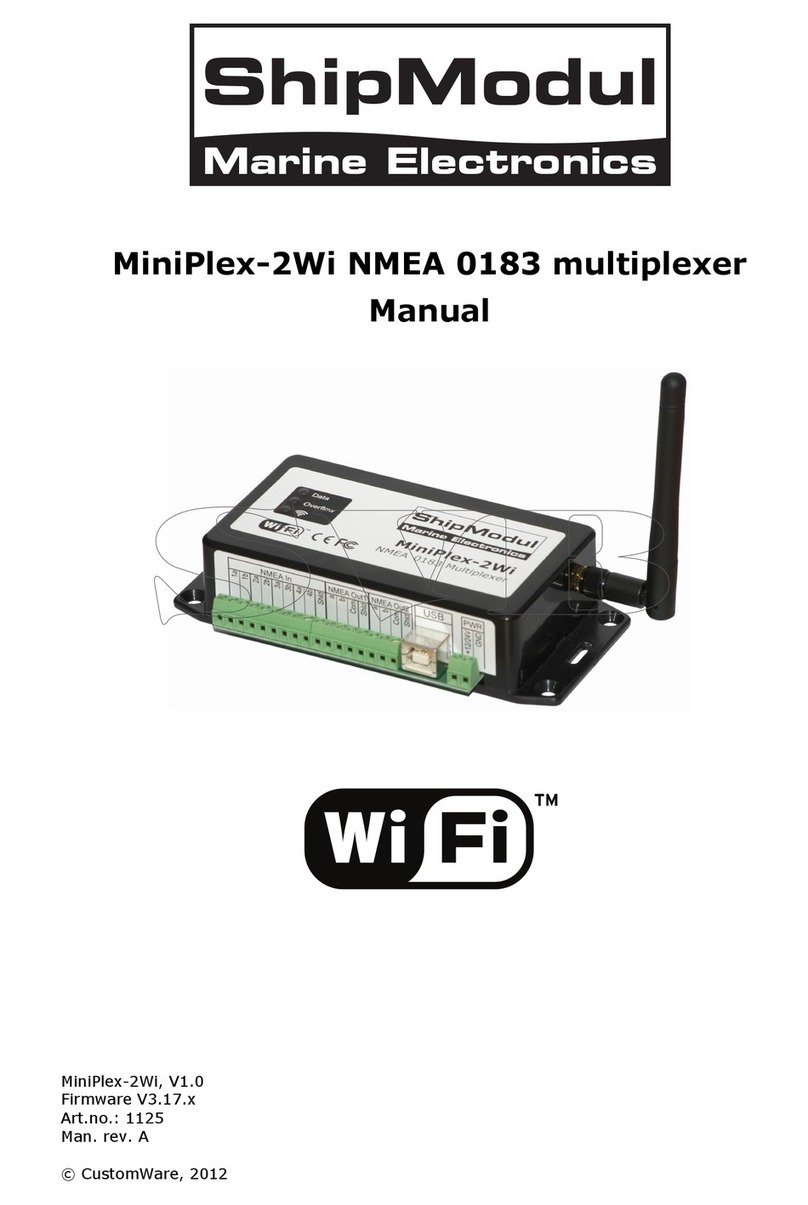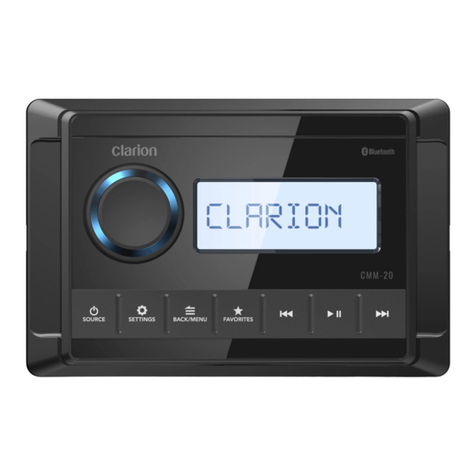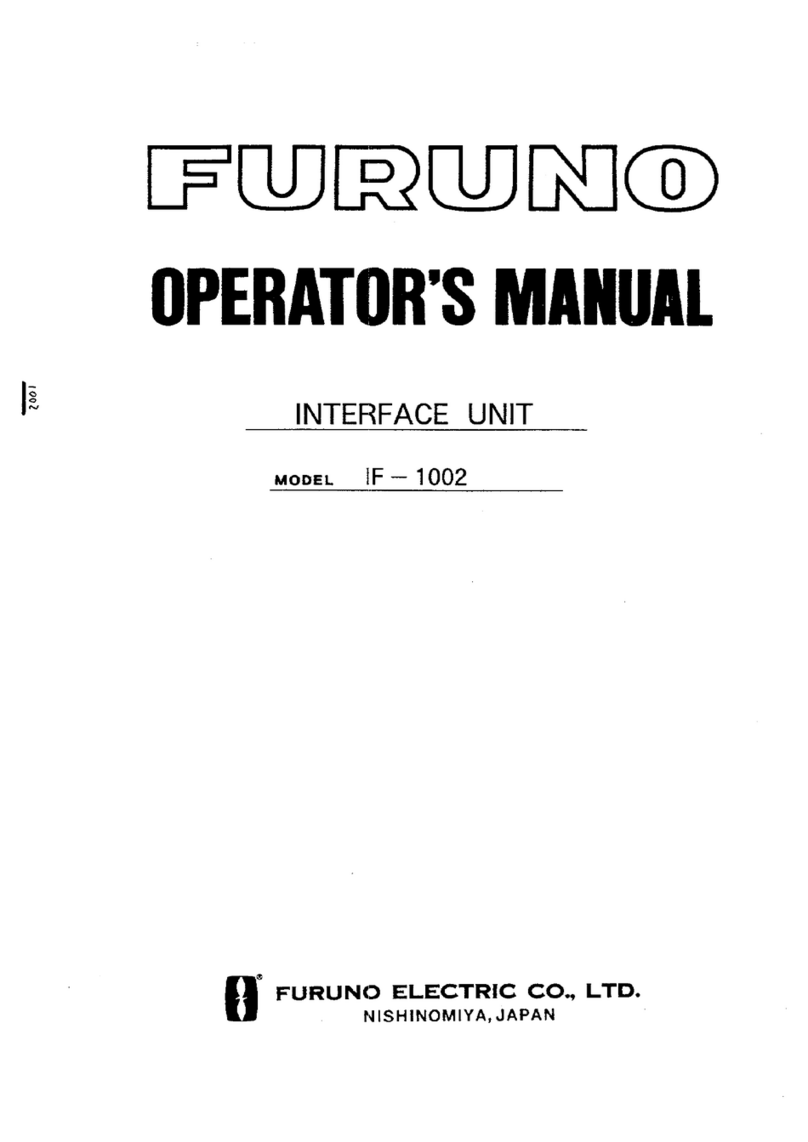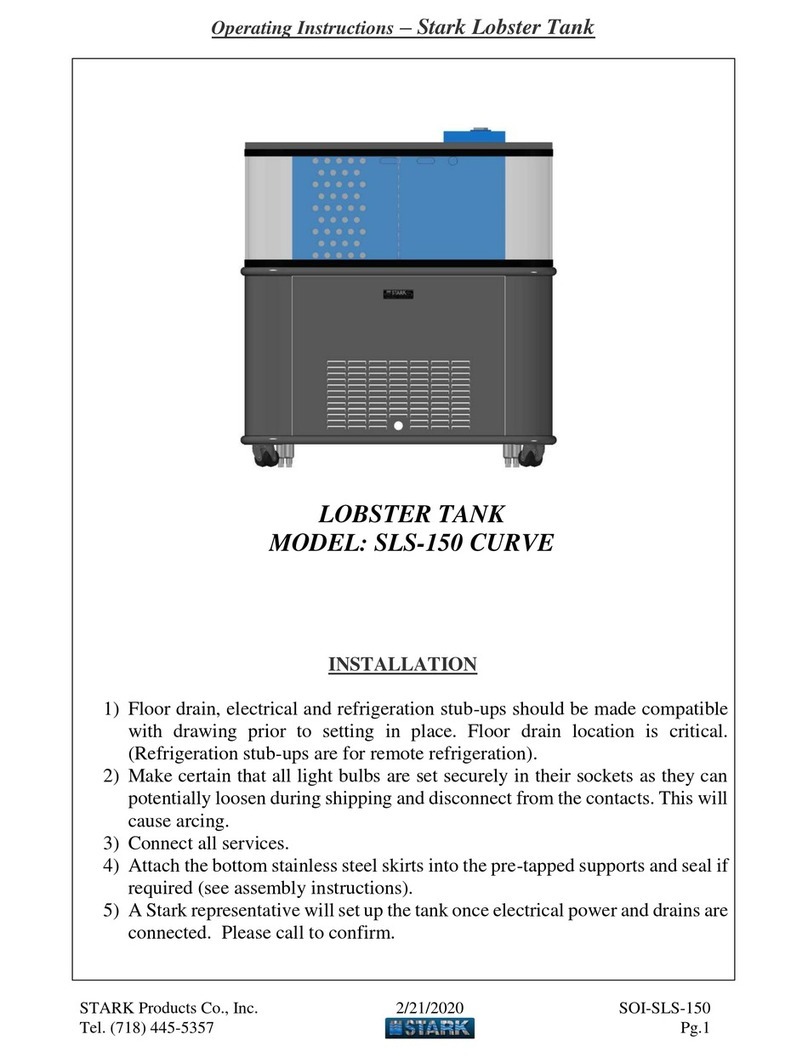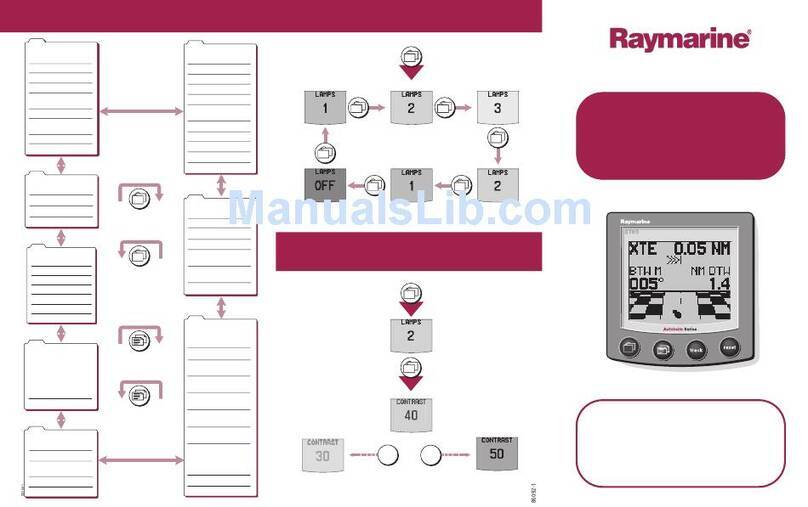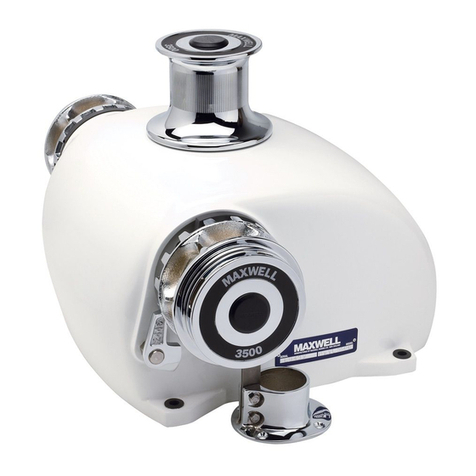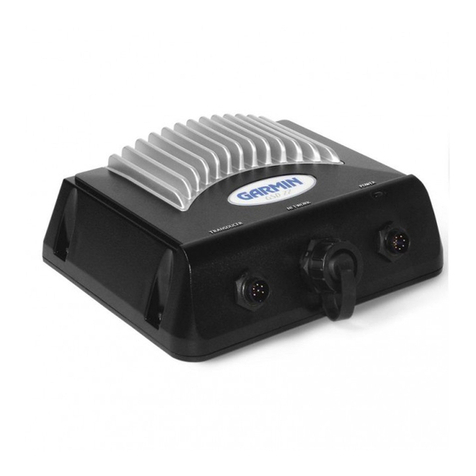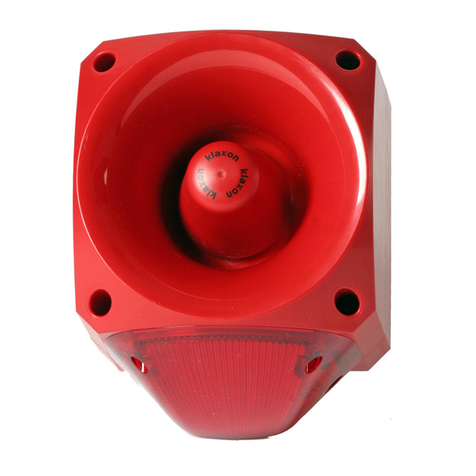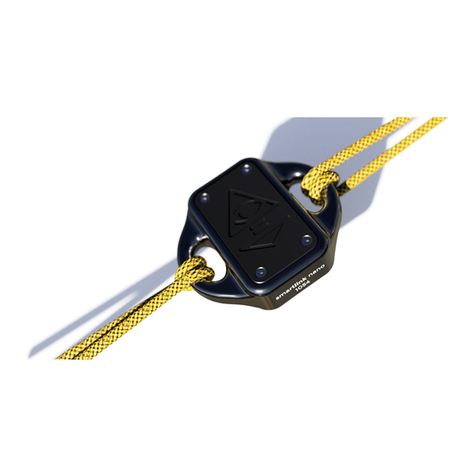Man iSea User manual



Operating Instructions
MAN Intelligent Marine Safeguard System
iSea / i Sea Class
“Translation of the original instructions”
51.99587-5043
Version 01

Imprint
2
Read this manual carefully before starting any work!
This is particularly applicable to the chapter “General Safety Instructions”
and the respective safety instructions in the chapters.
Subject to change without prior notice.
All information, texts, drawings, figures and other content are protected by copyright law and subject to
industrial property rights. Any improper use shall be liable to prosecution.
It is not permitted to change the contents of this document. The same applies to changes to the context
of individual chapters and/or the whole document. MAN Truck & Bus SE assumes no liability for any
damages arising from non-compliance with the above provisions.
Not to be reprinted, duplicated by any means whatsoever or translated – in whole or in part – without the
prior written approval of MAN Truck & Bus SE. All rights deriving from copyright law are expressly reserved
by MAN.
MAN Truck & Bus SE
Vogelweiherstraße 33
90441 Nürnberg
Tel.: +49 911/4201745
E-Mail: Engine[email protected]
Internet: www.engines.man.eu
Technical status as of: 11/2019
51.99587-5043

Table of contents
3
Read this manual carefully before starting any work!
This is particularly applicable to the chapter “General Safety Instructions”
and the respective safety instructions in the chapters.
1 Preface 7...........................................................................
1.1 General 7......................................................................
1.2 Copyright protection 8...........................................................
1.3 Safety instructions 8............................................................
1.4 Liability for material defects 8.....................................................
1.5 Explanation of icons 9...........................................................
2 General safety instructions 10.........................................................
2.1 Introduction 10..................................................................
2.2 Proper use 10...................................................................
2.3 Conversions and modifications to the engine and aftertreatment system 11..............
2.4 Requirements of personnel 12.....................................................
2.5 Personal protective equipment 13..................................................
2.6 Special hazards 14...............................................................
2.7 Safety equipment 17.............................................................
2.7.1 Functional test emergency stop on the E-box 17................................
2.8 Conduct in the even of hazards and accidents 18....................................
2.9 Signage 19......................................................................
2.10 Environmental protection 20.......................................................
3 Functional safety 21..................................................................
3.1 The following development guidelines and principles apply 22..........................
3.2 Definition of system scope 22......................................................
3.2.1 „Non class“ - Application 23..................................................
3.2.2 “Class” Application 24.......................................................
3.3 Boundary conditions and consequences of non-observance 25.........................
4 Electromagnetic compatibility (EMC) 26................................................
5 System overview 29..................................................................
6 Design and function of the electronics box (E-box) 31..................................
6.1 Versions of the electronics box 31..................................................
6.2 Components of the electronics box 34..............................................
6.2.1 Internal drive lever control unit MPC 34........................................
6.2.2 Motherboards 35...........................................................
6.2.3 Monitoring and Control System (MCS) - control unit 38..........................
6.2.4 Connector board 39.........................................................

Table of contents
4
Read this manual carefully before starting any work!
This is particularly applicable to the chapter “General Safety Instructions”
and the respective safety instructions in the chapters.
7 Drive lever control unit 40.............................................................
7.1 Internal drive lever control unit 40..................................................
7.1.1 Components of the internal drive lever control unit 41............................
7.1.2 Wiring of the internal drive lever control unit 42.................................
7.1.3 Drive lever control special function on the plug X88 47...........................
7.2 External drive lever control unit 49.................................................
7.2.1 Plug assignment X9 50......................................................
7.2.2 Voltage supply 52..........................................................
7.2.3 Speed signal for engine synchronization 53....................................
7.2.4 Start interlock 54...........................................................
7.3 Dimensions of drive lever 55......................................................
8 Installation 56........................................................................
8.1 Safety instructions 56............................................................
8.2 Installation of electronics box (E-box) 57............................................
8.3 Overview of plugs on the electronics box with acceptance 58..........................
8.4 Overview of plugs at the electronics box without acceptance 59........................
8.5 Interface E-box - engine 60........................................................
8.6 Installation of the bridge display 61.................................................
9 Control and operation of the E-box and the displays 63.................................
9.1 Keyboard functions of the electronics box 63........................................
9.1.1 Operating engine from engine room (classified) 65..............................
9.1.2 Keyboard functions of the engine room display 69...............................
9.1.3 Display menu engine room display 71.........................................
9.2 Bridge display (operator's stand and engine control room) 76..........................
9.2.1 Display menu touch display 77...............................................
9.3 Aftertreatment/emissions history/error print process 90................................
9.3.1 Aftertreatment system 90....................................................
9.3.2 Request system 91.........................................................
9.3.3 U.S. Tier 4 Marine requirements of the request system 93.......................
10 Connection of shipyard-side wiring 98.................................................
10.1 Wiring of the bridge display 98.....................................................
10.2 The shipyard plug X4 100..........................................................
10.2.1 Connection of a start and stop apparatus (in case of non classified) 102...........
10.2.2 Connection of an emergency stop button 103...................................
10.2.3 Connection of an acoustic warning apparatus 103...............................
11 Override system 104...................................................................
11.1 Function of the override system 104.................................................
11.2 Installation of the override button 104................................................
11.3 Wiring of the override button 105....................................................
11.4 Procedure example of override function 108..........................................

Table of contents
5
Read this manual carefully before starting any work!
This is particularly applicable to the chapter “General Safety Instructions”
and the respective safety instructions in the chapters.
12 Engine Operation Panels 110...........................................................
12.1 Engine Operation Panel EOP 110...................................................
12.1.1 General 110...............................................................
12.1.2 Wiring of the Engine Operation Panel EOP 110.................................
12.1.3 Installing the Engine Operation Panel EOP 111.................................
12.2 Engine Operation Panel EOP D 112.................................................
12.2.1 General 112...............................................................
12.2.2 Installing the Engine Operation Panel EOP D 112...............................
12.3 Connecting cables for the Engine Operation Panels EOP and EOP D 113................
12.4 Engine Operation Panel EOP 114...................................................
12.5 Engine Operation Panel EOP D 114.................................................
13 Connecting lines 116..................................................................
14 Parametrization start/stop on 7" touch display 122.......................................
14.1 Parametrization 122...............................................................
14.2 Possible error messages 125.......................................................
15 Parametrization of emergency drive on 7" touch display 127.............................
15.1 Parametrization 127...............................................................
16.2.1 EEC1 138.................................................................
16 Interface description - classified engines 132............................................
17 Interface description - non classified engines 136.......................................
18 Interface CAN-2 on bridge display 138..................................................
18.1 General instructions 138...........................................................
18.2 Ship-CAN interface (CAN-2 of the displays) 138.......................................
18.2.1 EEC1 138................................................................
18.2.2 EEC2 140................................................................
18.2.3 Turbocharger Info 4 140....................................................
18.2.4 Turbocharger Info 5 141....................................................
18.2.5 Engine Temperature 141...................................................
18.2.6 Fluid Level Pressure 142...................................................
18.2.7 Intake/Exhaust Conditions 143..............................................
18.2.8 Engine Electrical Power 144................................................
18.2.9 Exhaust Fluid Tank 144....................................................
18.2.10 Transmission Fluids 145....................................................
18.2.11 Time/Date 146............................................................
18.2.12 Engine Hours 147.........................................................
18.2.13 Fuel Economy 147.........................................................
18.2.14 Fuel Consumption 147.....................................................
18.2.15 Aftertreatment 1 SCR Service Info 2 148.....................................
18.2.16 Aux MAN Engine 148......................................................
18.2.17 DM_1_MAN-Engine 149....................................................
18.2.18 DISPLAY – Receive Messages 158..........................................

Table of contents
6
Read this manual carefully before starting any work!
This is particularly applicable to the chapter “General Safety Instructions”
and the respective safety instructions in the chapters.
19 Shipyard wiring diagram 159...........................................................
20 Directories 165........................................................................
20.1 Abbreviations 167.................................................................

Preface
7
Read this manual carefully before starting any work!
This is particularly applicable to the chapter “General Safety Instructions”
and the respective safety instructions in the chapters.
1 Preface
These operating instructions, with notes on installation and basic installation conditions, are binding
instructions for the shipyard / operating company regarding integration and operation of the “MAN
Intelligent Marine Safeguard System” and the engine electronics used in a higher-level system in which the
MAN marine engine is used as the primary drive.
1.1 General
MAN Truck & Bus SE (hereafter referred to as MAN) does not guarantee or approve the validity or
correctness of any installation. MAN's obligations with regard to any products are solely those obligations
stated in the applicable MAN warranty statement.
It is the installer’s responsibility to consider and avoid possibly hazardous conditions which could develop
from the systems involved in the specific engine installation. The recommendations provided in this
instruction regarding avoidance of hazardous conditions apply to all applications and are necessarily of
a general nature since only the installer is familiar with details of the installation. The recommendations
provided in these instructions should be considered general examples only and are in no way intended
to cover every possible hazard in every installation. The information in this document is the property of
MAN and/or its subsidiaries. Without written permission, any copying, transmission to others, and any
use except that for which it is provided is prohibited.
Contact the appropriate application support team for the latest information on MAN engines instructions
and requirements.
Failing to follow these instructions may void your basic warranty and emission warranty.
The specifications in these instructions must be fulfilled during installation and mounting to ensure
trouble-free operation and high operational performance.
These instructions are provided to each overall system manufacturer.
Tip for users
These instructions are a resource for the overall system manufacturer. They do not replace personal
consultation
MAN Customer Service is at your disposal for technical information.
The nearest MAN service center must be called in if malfunctions occur and for all checks, adjustments
and repairs, particularly during the liability for material defects period.

Preface
8
Read this manual carefully before starting any work!
This is particularly applicable to the chapter “General Safety Instructions”
and the respective safety instructions in the chapters.
1.2 Copyright protection
All information, texts, drawings, figures and other content are protected by copyright law and subject to
industrial property rights.
Any improper use shall be liable to prosecution.
Corporate identity
MAN, their respective logos, as well as corporate and product identity used herein, are trademarks of MAN
and must not be used without permission.
1.3 Safety instructions
Most industrial accidents during the installation, operation, maintenance and repair of the products are
caused due to non-compliance with basic safety regulations and protective measures. An accident can
often be avoided by recognizing potentially hazardous situations before an accident occurs. An installation
technician must be alert to potential hazards. The technician must also have the necessary training, skills
and tools in order to perform these works properly. The information in this publication was based upon
current information at the time of publication. Check for the most current information before you start any
job. MAN dealers will have the most current information.
1.4 Liability for material defects
Claims for liability for material defects can be lodged against MAN within the framework of the conditions of
sale and supply as agreed and stipulated in writing, only if:
SThe instructions has been followed during engine installation.
SThe initial installation acceptance was conducted by MAN.
SThe defects found in the process have been remedied by the device manufacturer and clearance has
been granted by MAN.
SThe series installation corresponds to the initial installation approved by MAN.
SOnly service products approved by MAN are used.
SThe prescribed service intervals are complied with.
SThe maintenance and repair works are carried out by MAN service branches and MAN authorized
workshops.
SNo unauthorized intervention in the engine control (tuning) were carried out.
In case of special editions, if additional ordering options have been selected, or due to the latest
technological developments, the actual scope of supply may vary from the explanations and illustrations
described herein.
The obligations agreed upon in the supply contract and the general terms and conditions of MAN, and the
statutory regulations valid at the time of concluding the contract shall be applicable.

Preface
9
Read this manual carefully before starting any work!
This is particularly applicable to the chapter “General Safety Instructions”
and the respective safety instructions in the chapters.
1.5 Explanation of icons
Warnings
Warnings in these instructions are identified by icons. The information has been introduced with signal
words that express the extent of risk or danger.
Follow the instructions in all cases and proceed with care in order to prevent accidents, personal injury and
material damage.
DANGER
Describes an immediate hazardous situation that will lead to severe or fatal injuries if it is not
avoided.
For this reason:
S
WARNING
Describes a potentially hazardous situation that may lead to severe or fatal injuries if it is not
avoided.
For this reason:
S
CAUTION
Describes a potentially hazardous situation that may lead to minor or moderate injuries if it is
not avoided.
For this reason:
S
NOTICE
Describes a potentially hazardous situation that may lead to damage to property if it is not avoided.
For this reason:
S
Tips and Recommendations
Tip for users
Tips and recommendations as well as information for efficient and trouble-free operation.
ENVIRONMENTAL WARNING
Tips on conduct for environmental protection.
General information
• This sign indicates a first-level listing.
- This symbol indicates a listing at the second level.
► This symbol indicates an action or series of actions.
(1) This symbol indicates the position of a graphic in the text.

General safety instructions
10
Read this manual carefully before starting any work!
This is particularly applicable to the chapter “General Safety Instructions”
and the respective safety instructions in the chapters.
2 General safety instructions
2.1 Introduction
This chapter contains safety instructions that must be taken into account already in the planning phase.
These instructions guarantee maximum protection of personnel and safe, trouble-free engine operation.
MAN cannot anticipate every possible circumstance that might involve a potential hazard. The warnings
in this publication and on the product are not all inclusive. If a tool, a procedure, a work method, or an
operating technique is used that is not specifically recommended by MAN, you must be certain that it
is safe for you and for other people. You must also be certain that the product will not be damaged.
You must also be certain that the safety of the product is not affected by the procedures that are used.
2.2 Proper use
DANGER
Risk of damages to the engine due to improper use
Expiry of operating permit.
For this reason:
SUse the engine only for the approved application.
The electronic components are exclusively designed for MAN marine diesel engines.
MAN does not assume liability for damage resulting from improper installation. The risk lies solely with the
operating company.
Proper use also includes compliance with the operating, maintenance and service work specified by the
manufacturer.
The engine must only be installed and put into service by personnel who are familiar with it and have been
instructed about potential dangers.
The manufacturer does not assume any liability for damage to property or personal injury resulting from
unauthorized modifications to the engine.
Manipulation of the electronics, the injection and control system and the exhaust aftertreatment system
may also affect the performance and exhaust gas behavior of the engine.
This means that compliance with the statutory environmental requirements is no longer assured.

General safety instructions
11
Read this manual carefully before starting any work!
This is particularly applicable to the chapter “General Safety Instructions”
and the respective safety instructions in the chapters.
2.3 Conversions and modifications to the engine and aftertreatment system
To avoid dangers and to safeguard optimal performance, neither modifications nor attachments or
conversions should be made on the engine or the aftertreatment system that have not been expressly
approved by MAN.
If modifications are made without the written consent of MAN, any obligation of guarantee or warranty on
the part of MAN for damage and defects that are attributable to the unauthorized modification becomes null
and void. Moreover, MAN does not assume any liability for damage caused by modifications that have not
been approved.
Any deviation from these instructions resulting in improper installation or connection of MAN aftertreatment
system may be considered an emission related defect requiring the OEM or installer to report to MAN
immediately. MAN is required to report any emission related defects to the U.S. EPA pursuant to 40 C.F.R.
§ 1068.261 (h) within 15 days.
OEM installations are subject to audit by MAN pursuant to 40 C.F.R. § 1068.261 (d)(3), as further set forth
in the delegated final assembly agreement.

General safety instructions
12
Read this manual carefully before starting any work!
This is particularly applicable to the chapter “General Safety Instructions”
and the respective safety instructions in the chapters.
2.4 Requirements of personnel
Qualifications
WARNING
Risk of injury caused by untrained personnel
Ignoring the safety regulations poses the risk of injury to personnel.
For this reason:
SCarry out all work steps in accordance with the information in these instructions.
SHave the engine serviced and repaired only by trained personnel.
SEnsure that the engine cannot be started by unauthorized persons.
SRegular attendance at product and user training.
SObserve safety and accident prevention regulations.
SEnsure orderliness and cleanliness in the working area.
The following qualifications are mentioned in the instructions for various areas of activity:
SA trained person
has been briefed about their assigned duties and informed about potential hazards in case of improper
conduct.
SQualified personnel
are people who, based on their technical education, knowledge and experience as well as knowledge
of the relevant regulations, are capable of carrying out the duties assigned to them professionally.
SA qualified electrical technician
is someone who, based on his technical education, knowledge and experience as well as knowledge of
the relevant standards and regulations, is capable of working on electrical systems, identifying potential
hazards on his own and avoiding them.
The qualified electrical technician is trained for the specific location where he is working and is familiar
with the relevant standards and regulations.
Only persons who can be expected to carry out their work reliably may be approved as personnel.
Persons whose reflexes are affected, e.g. by drugs, alcohol or medicines, are not approved.
► When choosing the personnel, observe and follow the regulations concerning age and profession
applicable at the place of deployment.
Unauthorized persons
WARNING
Risk of injury for unauthorized persons
For this reason:
SKeep unauthorized persons away from the working area.
SIn case of doubt, talk to the persons and instruct them to leave the working area.
SStop work as long as unauthorized persons remain in the working area.
Training
The personnel must be briefed and trained regularly. The training must be recorded for better tracking of
the training.

General safety instructions
13
Read this manual carefully before starting any work!
This is particularly applicable to the chapter “General Safety Instructions”
and the respective safety instructions in the chapters.
2.5 Personal protective equipment
It is necessary to wear personal protective equipment in order to minimize the risks to health while working.
SAlways wear the necessary personal protective equipment whilst carrying out any work.
SObey the signs present in the working area regarding personal protective equipment.
Industrial protective clothing
is tight-fitting work clothing with low tear strength, with tight-fitting sleeves and without
protruding parts. They are used primarily to protect against injuries, climatic influences
and dirt or contamination.
Do not wear any rings, necklaces or other jewelry on the body while working.
Hard hat
for protection against parts falling down or flying around.
Safety shoes
to protect against heavy falling parts and slipping on slippery surfaces.
Safety gloves
to protect the hands from abrasion, getting pricked or deep injuries as well as from
coming into contact with hot or corrosive parts or liquids.
Clothing for special work
When doing special work, special protective equipment is necessary. Special reference is made to these in
the various chapters of these instructions.
Safety goggles
to protect the eyes from parts flying around and liquid sprays.
Ear protection
to protect against hearing loss caused by noise.

General safety instructions
14
Read this manual carefully before starting any work!
This is particularly applicable to the chapter “General Safety Instructions”
and the respective safety instructions in the chapters.
2.6 Special hazards
Residual risks that have been determined are mentioned in the following section.
SObserve and follow the safety instructions listed here and the warnings in other chapters of these
instructions in order to mitigate risks to health and to avoid hazardous situations.
Electrical current
DANGER
Risk of life from electrical voltage
For this reason:
SIf the insulation of the voltage supply gets damaged, shut it down immediately and initiate its repair.
SHave work carried out on the electrical system only by electricians.
SFor carrying out any work on the electrical system, deenergize the system and check that it is
deenergized.
SShut off the voltage supply and secure it from being switched on again before completing
maintenance, cleaning or repair work.
SDo not bypass or disable any fuses. Replace fuses with those having the correct amperage rating.
SKeep moisture away from live parts. It can lead to a short circuit.
Moving components
WARNING
Risk of injury from freely rotating components
For this reason:
SRotating machine parts are to be equipped with a suitable touch protection.
SNever remove protective devices from rotating components.
SInspect and replace components only after the engine has been switched off.
Flying debris in the event of sudden engine damage
WARNING
Risk of injury from unauthorized presence in the engine room
For this reason:
SNo one is allowed in the engine room when the engine is running.
SObserve safety and accident prevention regulations.

General safety instructions
15
Read this manual carefully before starting any work!
This is particularly applicable to the chapter “General Safety Instructions”
and the respective safety instructions in the chapters.
Easily inflammable materials - diesel fuel, oils and greases
DANGER
Risk of injury from easily inflammable substances
Risk of fire from highly flammable materials, liquids and gases.
For this reason:
SSmoking is forbidden in the hazard zone.
SWorking with open flames and sources of ignition in the hazard zone is forbidden.
SKeep fire extinguishers ready for use.
SReport suspicious substances, liquids or gases immediately to the person in charge.
SDiscontinue work immediately in case of fire. Leave the hazard zone until given the all clear.
Hot service products
WARNING
Risk of scalding by hot service products
For this reason:
SWear personal protective equipment.
SFollow the accident prevention regulations.
SObserve workplace safety regulations.
Hot surfaces
CAUTION
Risk of burn injuries caused by hot surfaces
Components reach high temperatures during operation and cause scalding if they come into contact.
For this reason:
SWear personal protective equipment and safety gloves.
SAllow components to cool down to ambient temperature.
SEnsure that protective devices is never removed from hot components.
SNever remove protective equipment from hot components.
SFollow the accident prevention regulations.
SObserve workplace safety regulations.
Noise
WARNING
Risk of hearing impairment caused by noise
For this reason:
SAlways wear ear protection while carrying out any work.
SObserve workplace safety regulations.
SRemain in the hazard zone only as long as necessary.

General safety instructions
16
Read this manual carefully before starting any work!
This is particularly applicable to the chapter “General Safety Instructions”
and the respective safety instructions in the chapters.
Sharp edges, sharp corners, dirt and objects lying around
CAUTION
Risk of injury from disregarding accident prevention regulations
For this reason:
SFollow the accident prevention regulations.
SObserve workplace safety regulations.
Cable harnesses and plug connectors
NOTICE
Risk of damage to components caused by incorrect handling
Irreparable damage to plug connectors and engine control units from spread contacts and damaged
contacts.
For this reason:
SWhen installing, the plug first open the plug lock completely and then insert the plug connector and
lock it.
SProtect removed plug connectors and contacts against dirt.
SCheck cable harnesses and plug connectors only with a suitable test device (bushing box).
SConnect/disconnect the plug connectors of electronic control units only when the ignition is switched off.
Welding
NOTICE
Risk of component damage due to incorrect handling of welding equipment
Damage to components and the electronics system due to electric arc welding.
For this reason:
SWelding works of any kind may be carried out only after consultation with the system supplier or as
per his specifications.
SMAN shall not assume any liability for damages, especially to the engine electronics, that occur due to
improperly performed welding works.

General safety instructions
17
Read this manual carefully before starting any work!
This is particularly applicable to the chapter “General Safety Instructions”
and the respective safety instructions in the chapters.
2.7 Safety equipment
The operating company must retrofit the following safety equipment:
Install emergency-stop device before the engine is put into operation and link to the system’s safety chain.
Connect the emergency stop equipment in such a manner that in case of an interruption of the power
supply or restoration of power supply after an interruption, hazardous situations for human beings and
property are ruled out.
The emergency stop facility must always be easily accessible.
DANGER
Risk of life from non-functional safety equipment and devices
For this reason:
SBefore beginning work, check whether all safety equipment is functional and correctly installed.
SPrior to starting the engine, check whether all safety equipment and devices are working and have
been installed correctly.
SNever disable safety equipment or devices during operation.
2.7.1 Functional test emergency stop on the E-box
In order to timely detect failures, the emergency stop must be operated daily before the engine starts or
after all work on the E-box, so that dangerous situations do not occur for humans and machines.
See page 68.

General safety instructions
18
Read this manual carefully before starting any work!
This is particularly applicable to the chapter “General Safety Instructions”
and the respective safety instructions in the chapters.
2.8 Conduct in the even of hazards and accidents
Preventive measures
SAlways be prepared for accidents or fire!
SKeep first-aid equipment (first-aid box, blankets, etc.) and fire extinguishers readily accessible.
SCheck the first-aid equipment and fire extinguishers regularly for completeness and functionality.
SFamiliarize persons with accident reporting, first-aid and rescue equipment.
SRegularly conduct safety training.
SKeep entry routes clear for emergency vehicles.
In case of an accident: Act correctly
SRemain calm.
SShut down the engine immediately using the emergency stop button.
SInitiate first-aid measures.
SRaise the alarm with the ambulance and/or fire department.
SRescue persons from the hazard zone.
SMake entry routes clear for emergency vehicles.
SInform those in charge.
WARNING
Risk of injury from harmful service products
For this reason:
SObserve and follow the safety data sheets of the manufacturers.
SWear personal protective equipment.
SAvoid contact with the eyes and skin.
SAvoid spilling and mist formation.
CAUTION
Risk of injury from disregarding accident prevention regulations
For this reason:
SFollow the accident prevention regulations.
SObserve workplace safety regulations.
This manual suits for next models
1
Table of contents
Popular Marine Equipment manuals by other brands
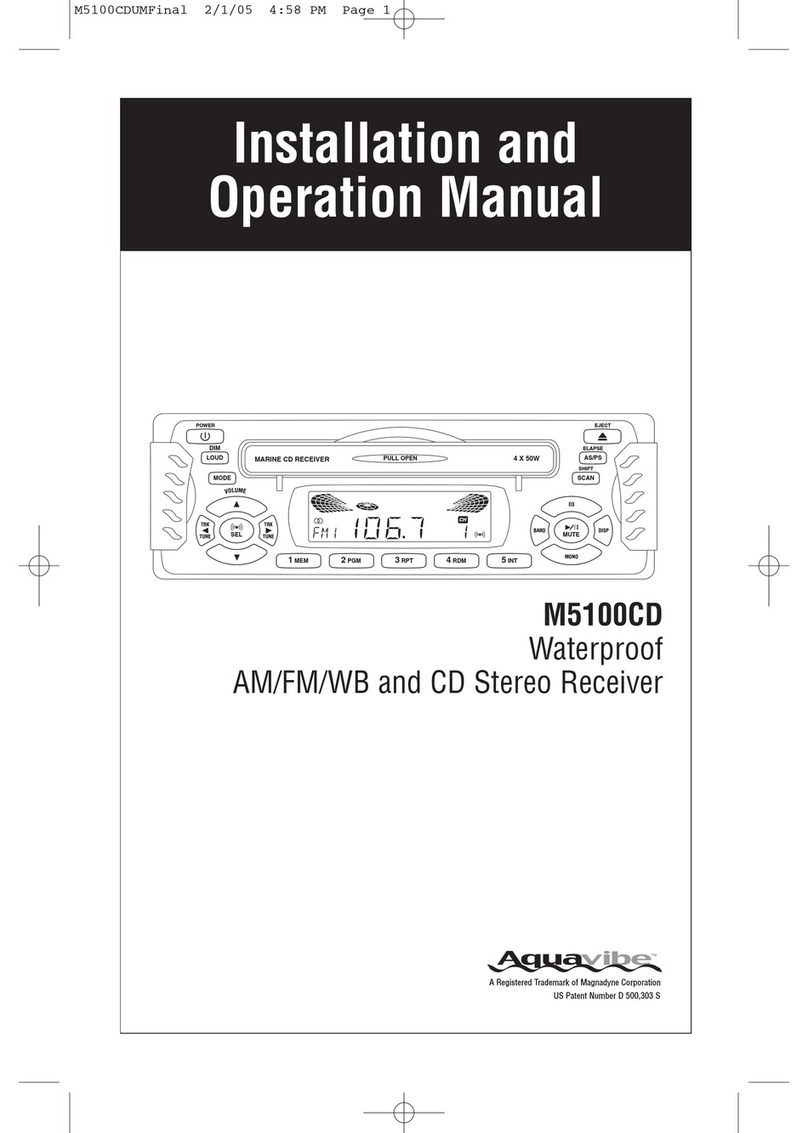
Magnadyne
Magnadyne M5100CD Installation and operation manual
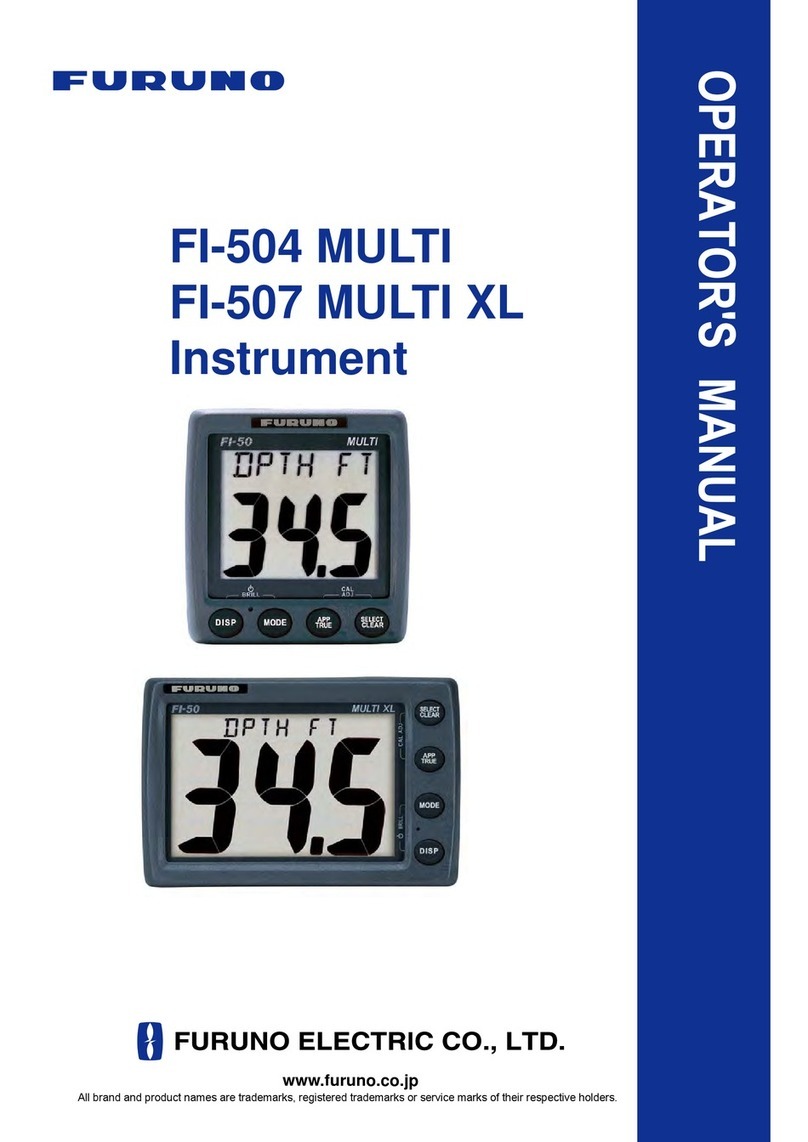
Furuno
Furuno Multi Instrument FI-504 Operator's manual

Apollo
Apollo REACH WIRELESS RW1500-110APO quick start guide
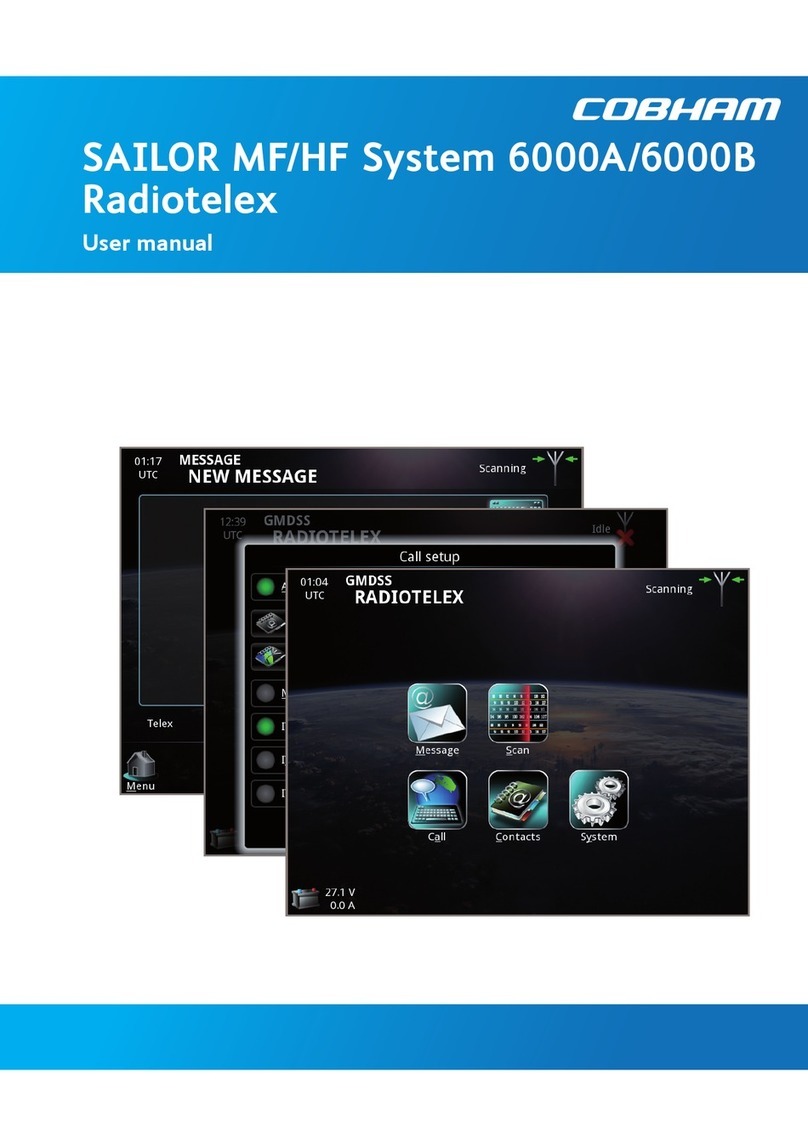
COBHAM
COBHAM SAILOR MF 63 Series user manual
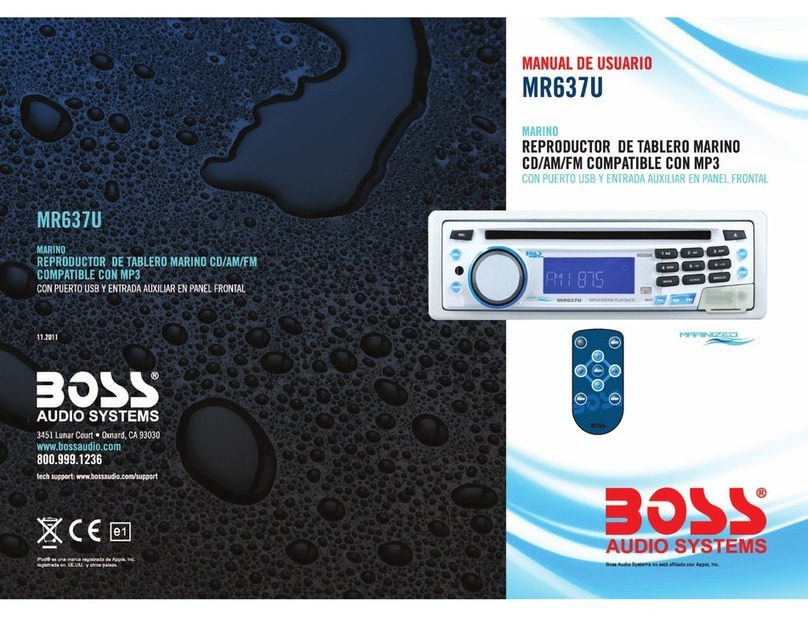
Boss Audio Systems
Boss Audio Systems MR637U Manual de usuario
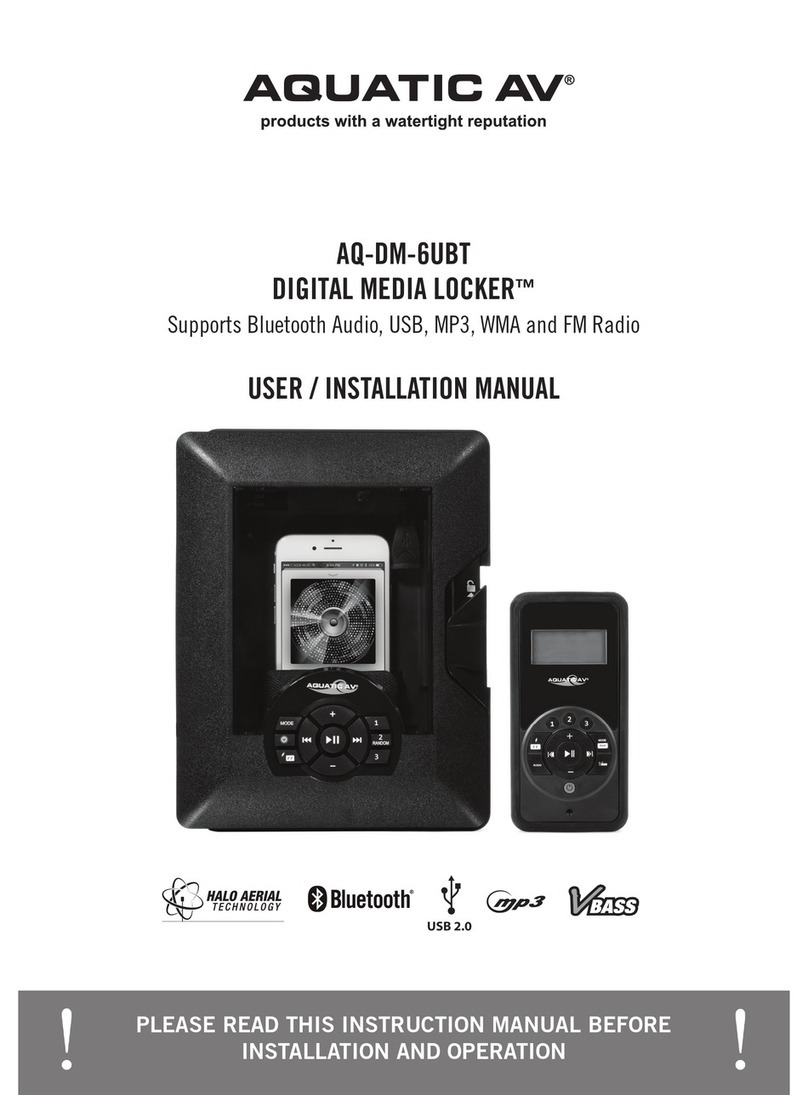
Aquatic
Aquatic AQ-DM-6UBT DIGITAL MEDIA LOCKER User & installation manual
